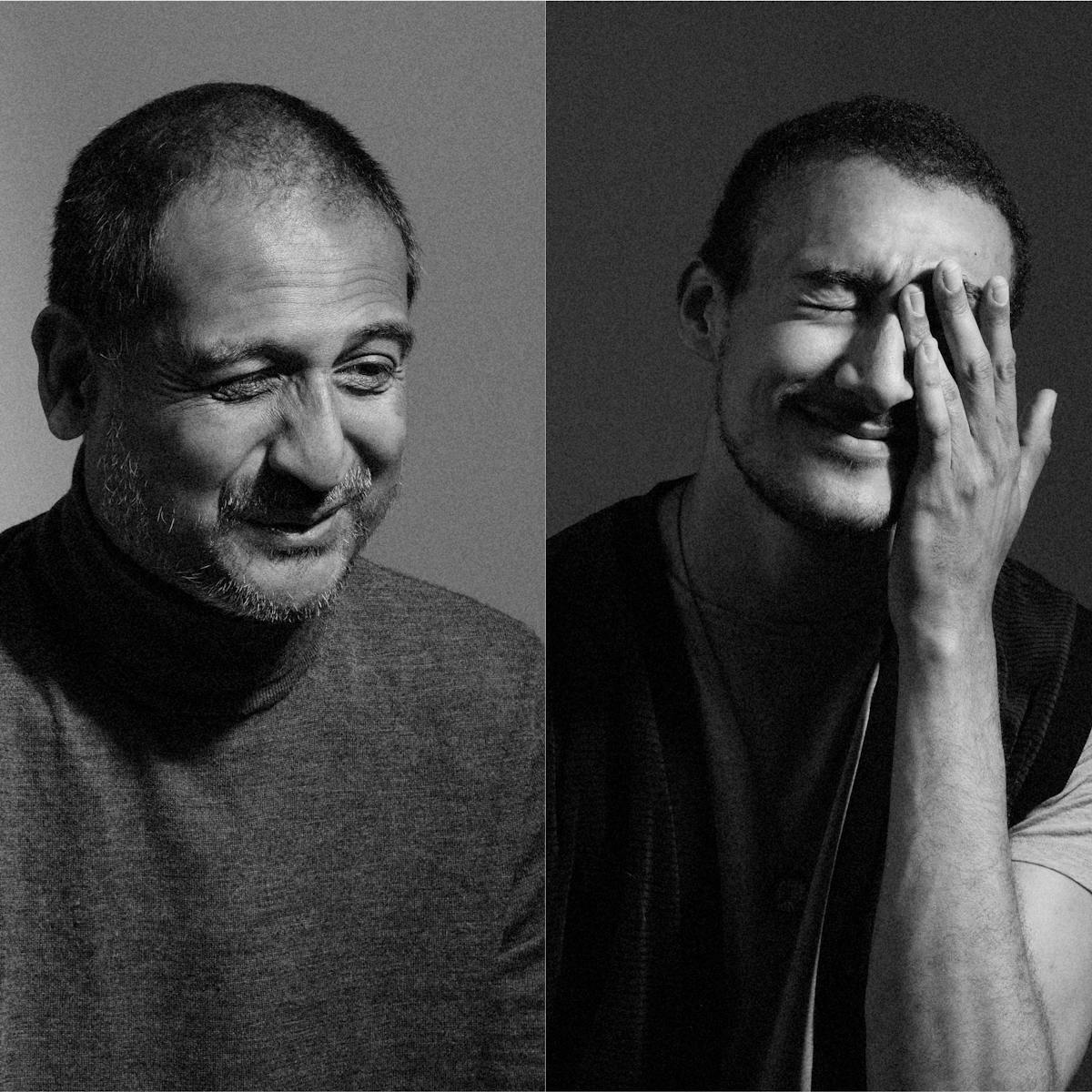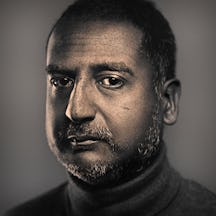Social awkwardness is synonymous with cringe comedy, and it’s a double act we tend to either love or loathe. David Jesudason explores why, for him, watching cringe is at once exhilarating and soothing.

The first time I felt my heart pounding when watching TV wasn’t during a blood-soaked horror movie or an adrenaline-packed action film. It was in the middle of an episode of ‘Frasier’, a genteel 1990s sitcom set in Seattle about a psychiatrist building a new life as a radio host.
The scene featured a long list of social faux pas made unwittingly by Frasier Crane, played by the actor Kelsey Grammer. As he bumbles through an ill-fated job interview, Frasier mistakes his would-be boss for the tea boy, then goes on to insult his wig, personal appearance and his ill mother. He also has his flies undone. Each ignominy seems more humiliating than the last and Frasier, erudite as ever, seems knowingly trapped in this claustrophobic situation by his nervous clumsiness.
An eminent psychiatrist flunking a job interview seemed a world away from my then life – I was a bored teenager living in a small market town – but it was the first of many examples of cringe comedy that I found both exhilarating and hilarious.
It was a light-bulb moment for me as a socially anxious telly addict. I realised I wasn’t alone. The episode did make me feel stressed, but the eventual release of tension and the loud laughter it spurred was cathartic.

Ruben watching ‘Chewing Gum’, the bit where Tracey gets a fancy new job.
Although Frasier hailed from cosmopolitan Seattle, the situations he found himself in were universally recognisable and surprisingly helpful to me. I asked Sophie Scott, an expert in cognitive neuroscience and a stand-up comedian, why this might be the case.
“There’s a predictability to cringe comedy,” she explained, “because you know how these characters have been in the past, and so you've got a good idea what’s going to be happening with them. Often the situations involve someone going to do something wrong, or something sets the wheels in motion for some sort of social disaster.
“A lot of the social anxiety, or the cringeyness, is associated with that kind of set-up, and if you didn’t know the characters, you might not experience the terrible anticipation of it all going wrong.”
Scott also believes that the viewer is invested in all the scene’s characters because it’s often so mortifying to witness everyone’s reactions. “Everybody feels terrible, not just the person who’s the focus of it,” she adds.

Ocean watching ‘The Boondocks’, the best bits of Uncle Ruckus.
Universal anxieties
Not everyone finds cringe comedy to be a positive force in the way I do. I watched that job-interview episode of ‘Frasier’ with my partner recently and she asked me to turn it off as it made her feel too stressed.
And there are episodes that even I find too difficult to watch, like the opener from series seven, ‘Momma Mia’, which focuses on Frasier falling for a woman who looks just like his mother. This Oedipus-like nightmare gets worse when the cringe is ramped up by including flashbacks of Frasier’s mother played by the actor who is also his girlfriend.
Scott explains that sitcoms like ‘Frasier’ tap into universal social anxieties, and teenagers can find them especially intense. “My teenage son gets incredibly upset during certain television programmes, like ‘Peep Show’, where something’s going to go wrong,” she says. “He was almost overwhelmed with anxiety.”

David watching ‘Peep Show’, the scene where Jeremy eats a dog.
Layers of masochistic enjoyment
Scott says cringe started in the UK with the radio sitcoms of Tony Hancock, which are often cited as the blueprint of all British character-based situation comedy. Hancock’s grumpy loser archetype’s DNA can be found in Basil Fawlty, Victor Meldrew and even ‘The Office’s David Brent.
If social awkwardness is synonymous with cringe comedy, then so is egotism. All cringe comedies have at least one character who is pompous and usually willing to overstep the boundaries of acceptability – think of David Brent telling racist jokes at a work gathering.
Older sitcoms like ‘Hancock’s Half Hour’ and ‘Frasier’ may have had cringe-comedy elements, but they feel staged compared to mock documentaries, like ‘This is Spinal Tap’ and ‘The Office’. These want you to imagine that you’re gaining voyeuristic access to the characters and seeing the worst sides of them. To do so they eschew recorded audience laughter and let the camera linger longer than you would expect during certain scenes.

Clare watching ‘Frasier’, the time Frasier goes for a job interview.
All cringe comedies have at least one character who is pompous and willing to overstep the boundaries of acceptability.
Ewen MacIntosh starred in ‘The Office’ as monotone-voiced accountant Keith. It was a performance inspired, he tells me, by Nigel Tufnel of Spinal Tap, who memorably lacked self-awareness.
“People who liked ‘The Office’ would say they almost couldn’t watch it,” MacIntosh says. “They almost had to look away and couldn’t bear to see it play out. They had an almost masochistic enjoyment of it.
“People watching would think, ‘Imagine if I was there?’ and, ‘Thank God I’m not there!’ But also picture how horrible it would be if it was happening to them. But it’s not happening to them at all, which means there’s weird layers going on.”

Nathan and Jemima watching ‘Bridesmaids’, when Annie and Helen compete in the best friend speech.
The problem with toxic character traits
Cringe comedy often relies on humiliating a character with questionable traits and political views: imagine Basil Fawlty’s xenophobia or Alan Partridge’s sexism. The problem is the audience can find both the social disasters and the character’s opinions equally amusing.
"It’s hard to imagine somebody watching someone as dreadful as Partridge,” says Scott, “and his toxic views being validated.” But I can remember when Ali G was on TV and some people – depending on how old they were and what kind of background they were from – either laughing at him and thinking he was completely awful, or thinking he was fantastic.
“It’s this inherent ambiguity around comedy,” says Scott. “And if it wasn’t ambiguous, it probably wouldn't be funny.”

Anouk watching ‘The Office’ (US), the scene where Phyllis is walked down the aisle.
This indeterminacy can lead to the comedy feeling shocking despite its humdrum setting. It also can be deeply problematic. When David Brent jokes about rape in ‘The Office’, is the viewer laughing at how pathetic he is or the shockingly inappropriate subject matter? Such ambiguity has seen scenes cut from comedies like ‘Fawlty Towers’.
‘Frasier’ features numerous homophobic, transphobic and misogynistic jokes. Cheap laughs like this will surely be binned when the show is revived in 2022. I’m not looking forward to the revival. The sitcom holds a special place in my heart, but with John Mahoney, the actor who played Frasier’s dad, now dead and other members of the cast reluctant to rejoin, it could become a comedy I find too cringeworthy to watch.
About the contributors
David Jesudason
David Jesudason is a freelance journalist who covers race issues for BBC Culture, Pellicle and Vittles. He was named Beer Writer of the Year in 2023, after his first book ‘Desi Pubs, A Guide to British-Indian Pubs, Food and Culture’ was hailed as “the most important volume on pubs in 50 years”. David also writes ‘Pub Episodes of My Life’, a weekly newsletter about the drinking establishments that serve marginalised people.
Camilla Greenwell
Camilla Greenwell is a photographer specialising in dance, performance and portraiture. She regularly works with Sadler’s Wells, Barbican, Candoco, Rambert, The Place, the Guardian, the British Red Cross, Art on the Underground and Wellcome Collection.

